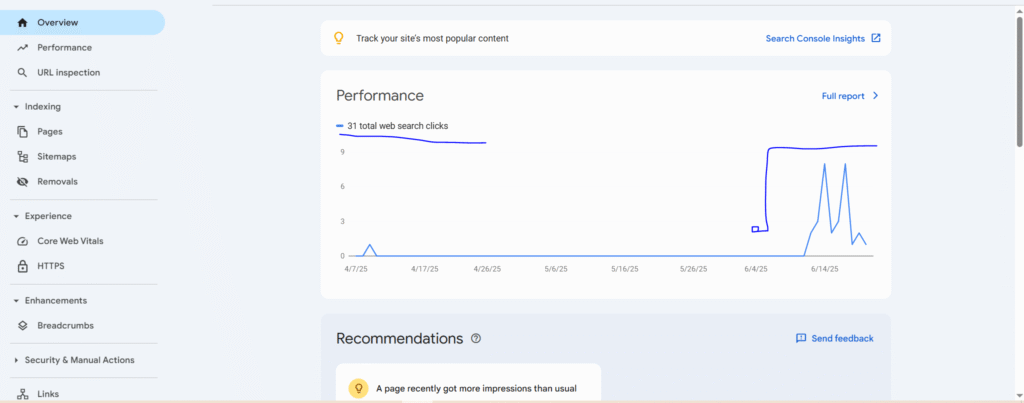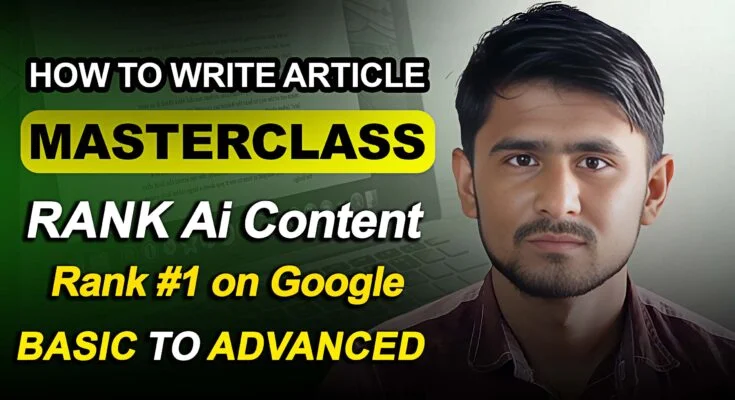You created your blog, wrote from the heart, published it too… but Nobody Reads Your Blog? Looking at the analytics, it seems as if the blog is not alive? If yes, then you are not alone. I too have gone through the same phase—zero traffic, zero clicks, and just frustration.
But then I followed a proven roadmap that changed my blogging journey. In this article, I am sharing the same step-by-step plan—which will bring readers to you too, without spending any ads. So read carefully from beginning to end… the real game of blogging starts from here!
The Problem: Why Your Blog Isn’t Getting Traffic
Are you putting your whole heart and hard work into your blog, but when you publish, you just get silence? You spent hours writing a post, felt very proud, pressed the “publish” button… and then? Nothing. Analytics was absolutely flat, and doubts started increasing inside.
If all this sounds familiar, remember one thing: you are not alone. And yes, this problem can be solved.
When I started my first blog, I faced exactly this problem. For 3-4 months, I did not get a single organic click from Google. I felt like I had failed. I was thinking of quitting blogging.
But I did not give up. I paused and thought, stopped guessing, and made a solid growth plan from scratch.
And with that plan, my blog started from scratch and got 2,000+ organic clicks per month—that too without spending a single penny on ads.
In this article, we are not just going to give some random tips. We will deeply analyze why your blog is not growing, and then give you a step-by-step roadmap that you can follow. By the end of the article you will get a clear direction to grow your blog.
Part 1: Diagnosing the Issue – 9 Reasons Your Blog Isn’t Visible
It is important to diagnose before moving ahead. Let’s take an honest look at your blog and see what is going wrong.
1. Your Content Isn’t Solving a Real Problem
This is the most common mistake. New bloggers often write what is on their mind, what they like to write—not what the audience needs.
For example, if you are writing “My summer thoughts”, then it is like a personal diary. But if you write “10 Budget-Friendly Ways to Entertain Children on a Rainy Day”, then that is a solution.
The reader always thinks: “What is there in this for me?” If your content does not answer this question, then no one will read it.
The Fix:
- What specific question am I answering?
- What problem am I solving?
- What goal am I helping my reader reach?
2. Your Blog Lacks Proper SEO Optimization
You can write the best article in the world, but if it is not optimized for Google, then people will never be able to find it.
SEO is not a ghostly thing. In simple language: You are making your content easy for Google so that they understand, find and rank it.
The Fix: Use Basic On-Page SEO
- Keyword Research: Identify the phrases people search on Google.
- Title Optimization: Create a clear and catchy title that contains keywords.
- Headings & Structure: Divide the content into sections using H2, H3.
- Image SEO: Keep the file names and alt text of images clear and relevant.
- Internal Linking: Link to other related articles of your blog in the post.
3. You’re Ignoring Search Intent
Search intent means what a user wants to find on Google, and why.
If someone searches for “best running shoes”, they want reviews or comparison lists—not the history of Nike.
If your content does not match what the reader is expecting, they will be removed from the site immediately. Google thinks your page is not helpful, and that affects your ranking.
The Fix:
- Search for your target keyword on Google.
- Look at the top 3-5 results—what kind of articles are they?
- Are they “how-to” guides?
- Are these list type (listicles) articles?
- Are these product reviews or case studies?
- Whatever format is repeatedly coming on top, it helps to understand what Google likes. That can become your success formula.
4. Your Content Lacks E-E-A-T
E-E-A-T is an important concept in Google’s quality guidelines. It means: Experience, Expertise, Authoritativeness, Trustworthiness.
Google puts forward content that is trustworthy and reliable.
The Fix: Enhance E-E-A-T
- Experience: Share your own experiences—the mistakes you made, the lessons you learned, the successes you achieved (like I did in the intro).
- Expertise: Don’t leave the topic at the surface level, go a little deeper.
- Authoritativeness: Link to trusted sources, and create a connected network in your blog (read Topic Clusters in Part 2).
- Trustworthiness:
- Keep your site design professional.
- Create a clear “About Me” page.
- Avoid grammar/spelling mistakes in your writing.
5. Your Blog Is Hard to Read (Poor User Experience)
If your blog is a long boring wall of text, the reader’s mind gets lost.
Nowadays people scan the content, but do not read every line carefully. If the font is small, paragraphs are long, and there are no visuals, people press the “back” button without reading.
The Fix: Improve Readability
- Write very short paragraphs (max 2-3 lines).
- Break the text with bold, italic, and bullet points.
- Use clear subheadings (H2, H3).
- Add images, charts, or videos that are related to the topic.
6. Inconsistent Blog Quality
If you write a great 3,000-word guide but then follow it up with five short, mediocre posts, Google and readers will get confused.
Inconsistent quality means: This site is not reliable. Every post must meet a minimum quality standard.
The Fix: Maintain Quality
- Create a short quality checklist:
- Will this post really help anyone?
- Is this post my best effort at this time?
- Does it solve the problem I had in the beginning?
7. Irregular Blogging Schedule
If you disappear for a month and then post three posts in a day, this strategy is completely useless.
Consistency is very important. This lets your readers expect when new content will arrive, and also signals to Google that your site is active, updated, and crawlable/rankable.
The Fix:
- Create a realistic publishing schedule and stick to it.
- One high-quality post every week is more powerful than 4 average posts every month.
8. No Content Promotion Strategy
In the early days, just hitting the “publish” button is not enough. That’s only 20% of the work.
It takes time to get traffic on Google. Until Google builds trust, you have to reach your first readers yourself.
The Fix:
- Find where your readers spend time online—Pinterest, Reddit, LinkedIn, or specific Facebook groups.
- Answer questions and share your blog link when it’s truly useful (not spam).
9. Focusing on Money Over Value
If your first goal is to earn money, the audience can feel it. Your content seems like a hidden sales pitch, not a helpful guide.
People don’t want to read articles that are written just to sell something.
The Fix:
- Adopt a “value first” mindset. Provide genuine, valuable content that makes readers think, “This person taught me everything for free!”
- Trust builds opportunities to monetize authentically.
Part 2: A 6-Step Roadmap to Attract Readers
Now that we know what the problem was, let’s create a solution. This is a solid, step-by-step action plan to get your blog back on track.
You can see that initially I didn’t have any views on my search console and when I followed all these steps, my website slowly started to grow. Similarly, you can also increase your ranking in Google by following the roadmap.

Step 1: Build a Strong Base – Choose a Passionate Niche
Don’t try to be everything to everyone.
If your blog is just about “health”, then it’s too broad. But if your blog is “Intermittent fasting for women over 40”, then it’s specific and has a clear audience—one who is also interested in that topic.
Key Tip: Choose a niche you’re passionate about to stay motivated during slow months.
Step 2: Prepare a Blueprint – Learn Helpful Keyword Research
The time of cheating the algorithm is over. Today’s SEO focuses on one thing—helpful content.
Your goal is to find the exact questions and problems of the audience which they type in Google.
How to Find Keywords:
- Go to Google and type in a broad topic related to your niche.
- Pay attention to autosuggest results.
- Look at the “People also ask” section—every question can become a new blog post.
- Check the “Related searches” at the bottom of the page.
Target Keywords Examples:
- “how to fix a leaky faucet”
- “best budget travel tips for Europe”
- “easy weekly meal plan for weight loss”
Step 3: Build Architecture – Pillar Posts and Topic Clusters
This strategy is a game-changer in building your authority.
- Pillar Post: A long, detailed “ultimate guide” on a broad topic, e.g., “The Ultimate Guide to Starting a Vegetable Garden.”
- Topic Clusters: Smaller posts explaining specific sub-topics, linked to the pillar post, e.g.:
- “Best Soil for Tomatoes”
- “How to Get Rid of Aphids Naturally”
- “When to Plant Carrots”
This structure signals to Google that you’re an expert on the entire topic, keeping readers on your site longer.
Step 4: Final Polish – Check SEO and Readability
Before publishing, use this checklist:
- Is the main keyword in the title, URL, and first paragraph?
- Is the logical structure of headings (H2, H3) created?
- Are paragraphs short and easy-to-read?
- Have you added alt text to relevant images?
- Have you linked to 1-2 related articles on your blog?
Step 5: Launch Time – Promote Your Content
When you publish a blog post, spend 30–60 minutes on promotion:
- Share on social media (Pinterest, Twitter, LinkedIn, etc.).
- Answer relevant questions on Quora or Reddit and share your post link where appropriate.
- Email your newsletter subscribers with a link to the new post.
Step 6: Think Long Game – Adopt Consistency and Patience
This step is the hardest and most important. You won’t see great results in a week or even a month.
It took me 3-4 months to see real results, and that’s normal. Blogging is a marathon, not a sprint.
Tips for Success:
- Stick to your publishing schedule.
- Write high-quality, SEO-optimized posts weekly.
- Build slow momentum to win trust from readers and Google.
Final Thoughts: Turn Your Blog Into Reality
If your blog is struggling, don’t give up. The frustration you are feeling is a sign that you need to adjust your strategy a little—not quit blogging.
Always Remember:
- If your content is the best but not optimized, people won’t find it.
- If your content is optimized but lacks value, it’s useless.
- Patience and consistency are everything.
Choose a topic you’re passionate about to stay motivated. Now you have a complete diagnosis and a clear roadmap. Start from Step 1, have patience, and turn your dream blog into reality.





